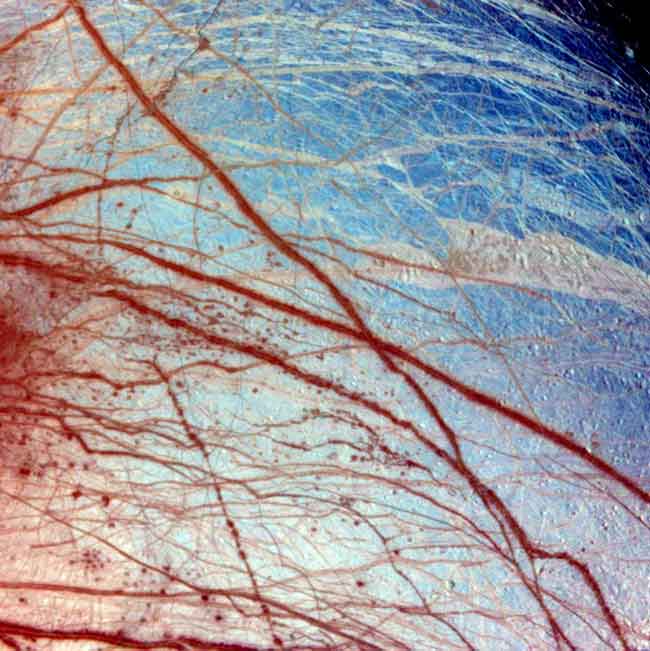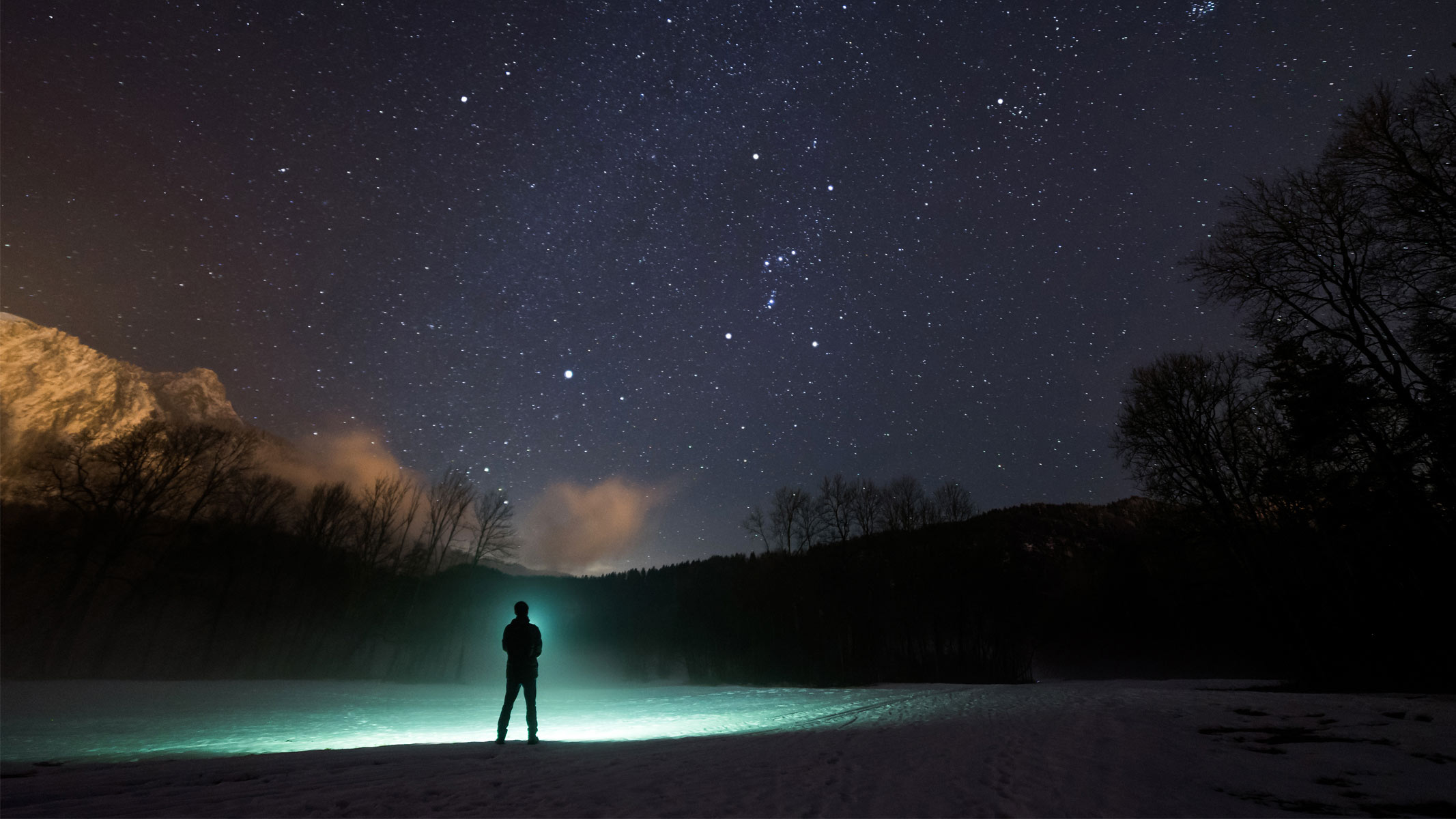Some Parts of Earth Are Similar to Jupiter's Moon Europa

Insteadof flying to Europa without first testing what a missionthere might experience, now a number of sites on Earth ? and beyond ?thatmimic the Jovian moon are being uncovered that could help explorersconducttrial runs.
Missionsto Mars such as the Mars Exploration Rovers were exhaustivelyfield-tested in "MarsYards" ? areas whose terrain mimicked the Red Planet. In much the sameway, researchers would like to rehearse missionsto explore Europa using analogs of that moon on Earth.
Landingand moving on Europa could prove especially tricky given its icy andcrackedsurface. With all the curiosity over whether Europa might host alienlife,scientists also would like to vigorously test methods that look forevidence oflife, yet avoid contamination of results by any Earth microbes thatmightinadvertently hitchhike on our space vehicles.[Photosof Europa and other Jupiter moons.]
"Beforewe can build landers, we need to understand these environments, and theinterplay of biology and chemistry under these unusual conditions,"saidastrobiologist Damhnait Gleeson at NASA's Jet Propulsion Laboratory."Designing missions to go to Europa presents many technical challenges,from the low temperatures to the harsh radiation."
LakeVostok
Probablythe most important analog for Europa on Earth is Lake Vostokin Antarctica. Just asEuropa?s ocean likely lies beneath perhaps some 9.3 miles (15 km) ofice, LakeVostok is located roughly 2.5 miles (4 km) beneath the surface of theEastAntarctic ice sheet.
Theice-penetrating radar through which Lake Vostok was discovered isexpected toprove valuable on Europa, and the lake is also dynamic like Europa isexpectedto be ? for instance, geothermal heat at Lake Vostok is estimated todrivewater flow at rates not too different from what is expected on thatmoon.
Breaking space news, the latest updates on rocket launches, skywatching events and more!
Thequestion of whether or not there is life in Lake Vostok, as withEuropa, is achallenging one to answer. While some measurements of ice near the laketurnedup a variety of microbes and organic molecules, other research onlyturned upthe DNA signature of specialized heat-loving bacteria, while stillotherstudies have turned up no microbes whatsoever. The stringent proceduresdeveloped to decontaminate tools and thus get clear results from LakeVostokshould prove helpful for Europa missions as well.
LakeTirez
WhileLake Vostok may reflect those parts of Europa made of mostly pure waterice,the extremely salty hyper-saline waters of Lake Tirez in Spain may bearchemical similarities with Europa's hidden liquid ocean. The waters ofLake Tirezare loaded with magnesium, sodium, chlorine and sulfates, and whenfrozen,these brines resemble readings of Europa procured by NASA's Galileospacecraft.
Indeed,instruments used to study frozen Tirez brines have already flown inspace, suchas the Thermal and Evolved Gas Analyzer on the Mars Polar Lander andPhoenixmissions, so they or their descendents could also find use in Europalanders.
LakeTirez also possesses two forms of life ? photosynthetically-sustainedcommunities as well as life that relies on inorganic compounds forrespirationin an airless, subsurface realm. This lake could prove a key testingground forinstruments designed to look for life on Europa. Forinstance, scientists havedetected microbes in the lake using compounds that fluoresce in contactwithbiological materials.
Theextremely salty waters of Lake Tirez pose challenges for missionsthere, makingit a good place to test Europa craft. "Hyper-saline brines are known tohave corrosive effects on many metals," Gleeson said. "Corrosionresearch is ongoing at sites such as the drilling operations targetinggeothermal brines at the Salton Sea, into materials that are moreresilient tothese effects."
BorupFiord Pass
Extraordinarilyrare sulfur springs at BorupFiord Pass onEllesmere Island in the Canadian High Arctic couldserve as the best chemical analog to the Europan surface. As such, theglacialdeposits there could give scientists a good idea as to what to look forinlanding sites.
Europais covered with sulfur-richmaterialsconcentrated along cracks and ridges onits icy surface. Although the Galileo space probe's spectrometerscapturednear-infrared signals from Europa ? "spectral fingerprints" thatcould help identify what these substances are ? so far it remainsuncertainwhat exact blend of compounds matches up with this fingerprint. To helpidentify these mysterious compounds, researchers are investigatingBorup FiordPass, which possesses combinations of sulfur-rich springs and glacialice thatare very rare on Earth and resemble the Jovian moon's surface.
Scientistshave examined materials from Borup Fiord Pass not onlyin the field and the lab but also with satellites, using techniquesthat shouldprove useful whenit comes time for spacecraft orbiting Europa to look for a spot toland. Moreover, microbialcommunities are present in the depositsfrom Borup Fiord Pass, and looking at the signatures that such life onourplanet leave behind could be vital when scanning for life on Europa.
"Underthese extreme conditions, microbial life on Earthcannot merely survive, but actually prosper," Gleeson said. "This isgood news for the potential for life at Europa."
Alpineanalogs
Thefaint red blooms of algae in the snowfields and glaciers ofthe Sierra Nevada Mountains in California could serve as a usefulexample oflife that is detectable by the kind of remote techniques missions coulduse forinvestigating distant worlds. For instance, NASA's Airborne Visible andInfrared Spectrometer, which has flown in several aircraft, could imagethecolorful compounds in the snow algae Chlamydomonas nivalis
Permafrostregions such as Siberia and Alaska also could proveuseful analogs for Europa. Methane and other organic compounds mightgetreleased into the atmosphere in those icy regions, especially duringthe thawseason, and it is already possible for airborne and spaceborneinstruments todetect such emissions. When it comes to monitoring such emissions onEuropa,scientists will want to be able to determine whether or not they aresigns oflife.
Outerspace
Asidefrom Earth, other sites that space missions have visited orplan to voyage to could prove helpful analogs for Europa. For instance,our ownmoon is similar to Europa in terms of size, gravity, hard vacuum andthevariable amount of light it receives. A return to the moon inthe next decadecould yield important lessons for Europa.
Althoughour moon's surface composition is quite different fromEuropa's, an exception could be the icy deposits in our Moon'spermanentlyshadowed polar areas. Moreover, the transport of dust or electricalcharginginduced by sunlight may occur on the moon, and similar processes couldoccurbut have not yet been considered for Europa.
Cometsmight also be useful.In 2014, the Rosetta spacecraft will arriveat comet 67P/Churyumov-Gerasimenko and deposit a lander there.Researchers areas yet uncertain whether its surface is Europa-like, and its lowgravityintroduces complications absent on Europa ? for instance, Rosetta'slander willneed harpoons and self-hammering spikes to anchor itself to the comet.
Thefuture
Scientistswould not only like probes to practice tasks familiar from past spacemissions,such as snapping photos and picking up samples, but conduct new ones aswell,such as seismic readings. They also would like to expose instruments toas manyenvironments as possible to help avoid unwelcome surprises, such as howthe PhoenixMars Lander had problems ingesting soil samples because theywere toosticky.
Phoenixlanded at high northern latitudes where soil moisture was apparentlyhigherthan at other regions on Earth and Mars that had served as analog testlocations.
Noanalog is a perfect match for Europa. Still, "the similarities are moreimportant than the differences in this case," Gleeson said. "The moredifferent sets of conditions we prepare for, the better our chances ofbeingprepared for the unexpected at Europa."
- Photos:Europa and Other Jupiter Moons
- Europaon Earth
- RobotsCould Hunt for Fossils on Europa

Charles Q. Choi is a contributing writer for Space.com and Live Science. He covers all things human origins and astronomy as well as physics, animals and general science topics. Charles has a Master of Arts degree from the University of Missouri-Columbia, School of Journalism and a Bachelor of Arts degree from the University of South Florida. Charles has visited every continent on Earth, drinking rancid yak butter tea in Lhasa, snorkeling with sea lions in the Galapagos and even climbing an iceberg in Antarctica. Visit him at http://www.sciwriter.us
